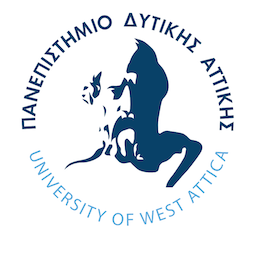
PhD candidate
Yorgos Skouloudis (1983) is a graduate of the Department of Photography and Audiovisual Arts at the University of West Attica, where he also completed his master’s degree in “Photography: Research and Methodology.” He lives and works in Athens. His work focuses on social groups and communities in the degraded areas of the city center (Omonia, Socratous Street, Metaxourgeio), as well as on natural landscapes affected by human activity (Alfeios River, Megalopolis). Since May 2025, he has been conducting his PhD research in Photography at the University of West Attica, focusing on the transformation of the landscape of Megalopolis.
PhD Proposal Summary – PhD Candidate Y. Skouloudis
Title: “The Photographic Landscape of Megalopolis: Exploring the Cultural and Environmental Heritage of an Industrial Town through the Study of Archival and Contemporary Photographs”
The doctoral thesis focuses on the study of the transformation of the landscape of Megalopolis in Arcadia, a small town whose economic development relied almost exclusively on the production of electricity through the extraction and combustion of lignite. After the construction of the thermal power plant (TPP) in the late 1960s, the landscape of the area underwent profound transformations. The former agricultural valley of Megalopolis was gradually transformed into a site of surface mines, extraction machinery, and artificial ash disposal hills.
In December 2024, the plant, which for decades had been the center of the town’s economic and social life, was permanently shut down, leading to the economic decline of Megalopolis.
The aim of the study is to investigate how the plant, through the lignite process, shaped the natural landscape, influencing not only the topography of the area, but also the collective memory, cultural heritage, and the residents’ understanding of the landscape.
The methodology of the research combines three main tools: the research and analysis of photographic archives from different institutions, the production of contemporary photographs, and the implementation of semi-structured interviews with residents and former employees of the TPP, in order to highlight the experiential and collective dimensions of their relationship with the plant.
The study is of particular interest, as the interaction between human and environment, industrial and cultural heritage, intersects spatially, temporally, and semiologically. The proximity of the archaeological site to the technical monument of the plant leads to a unique relationship that makes Megalopolis a distinctive case study
Finally, this research aims to address a major knowledge gap by offering a comprehensive view of the environmental, social, and cultural dimensions of Megalopolis. It also highlights the role of photography as a tool for analyzing the landscape and documenting environmental and social change, contributing to discussions on industrial heritage, collective memory, and the human–environment relationship.


